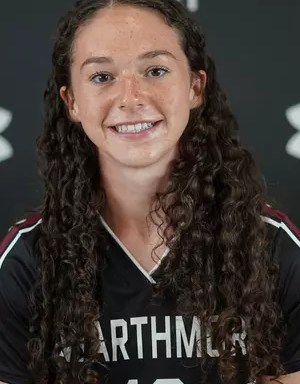Editor’s note: This article was initially published in The Daily Gazette, Swarthmore’s online, daily newspaper founded in Fall 1996. As of Fall 2018, the DG has merged with The Phoenix. See the about page to read more about the DG.
 Part of Mrozewski and Zarate’s workstation in Hicks basement. Photo by Dougal Sutherland.
Part of Mrozewski and Zarate’s workstation in Hicks basement. Photo by Dougal Sutherland.In recent weeks, Jakob Mrozewski ’11, a Psychobiology major with an Environmental Studies minor, and Janet Zarate ’11, an Engineering and Gender and Sexuality Studies double major, have been spearheading an independent project that could potentially make Swarthmore an environmentally friendlier campus. The goal of this project, supervised by Professor Carr Everbach of the engineering department, is to convert used cooking oil from Sharples dining hall into biodiesel fuel that could be used in Swarthmore facilities or vehicles.
The first stage of the project consists of converting small batches of unused cooking oil into biodiesel in order to receive estimates on how much biodiesel fuel will be produced from used cooking oil. The goal of the second stage is to find the exact measurements of how much biodiesel is produced, and how much emissions are created from the combustion of biodiesel. The entire process is staged in Hicks basement, where solar power is heating up a reaction chamber in which the transesterification process occurs. Once these measurements have been found, Mrozewski and Zarate will be able to create a “formula” for making biodiesel fuels that others can follow.
This is one of their goals: to make the process easy, so that others can continue this project to produce biodiesel fuels that the college can use. Both students said they planned on contacting Facilities to see if they could possibly use the biodiesel fuel, as well as Good Food to possibly continue the project. Since this biodiesel is produced from used cooking oil from Sharples, and the biodiesel will be used for campus facilities, this project could ultimately save money.
In retrospect, Mrozewski commented, “It was cool that I could apply the stuff I learned in my Chemistry classes to a hands-on project.” When asked about the project in general, Zarate replied, “The great thing about Swarthmore is that you don’t have to be an engineering major to utilize the resources at the engineering department or any other department. If students want to do something, professors are usually open to ideas.”
Correction: This article originally listed Mrozewski’s major and minor incorrectly. It also stated, as Mrozewski and Zarate believed, that Sharples pays to have used cooking oil disposed; in fact, that is done for free.









